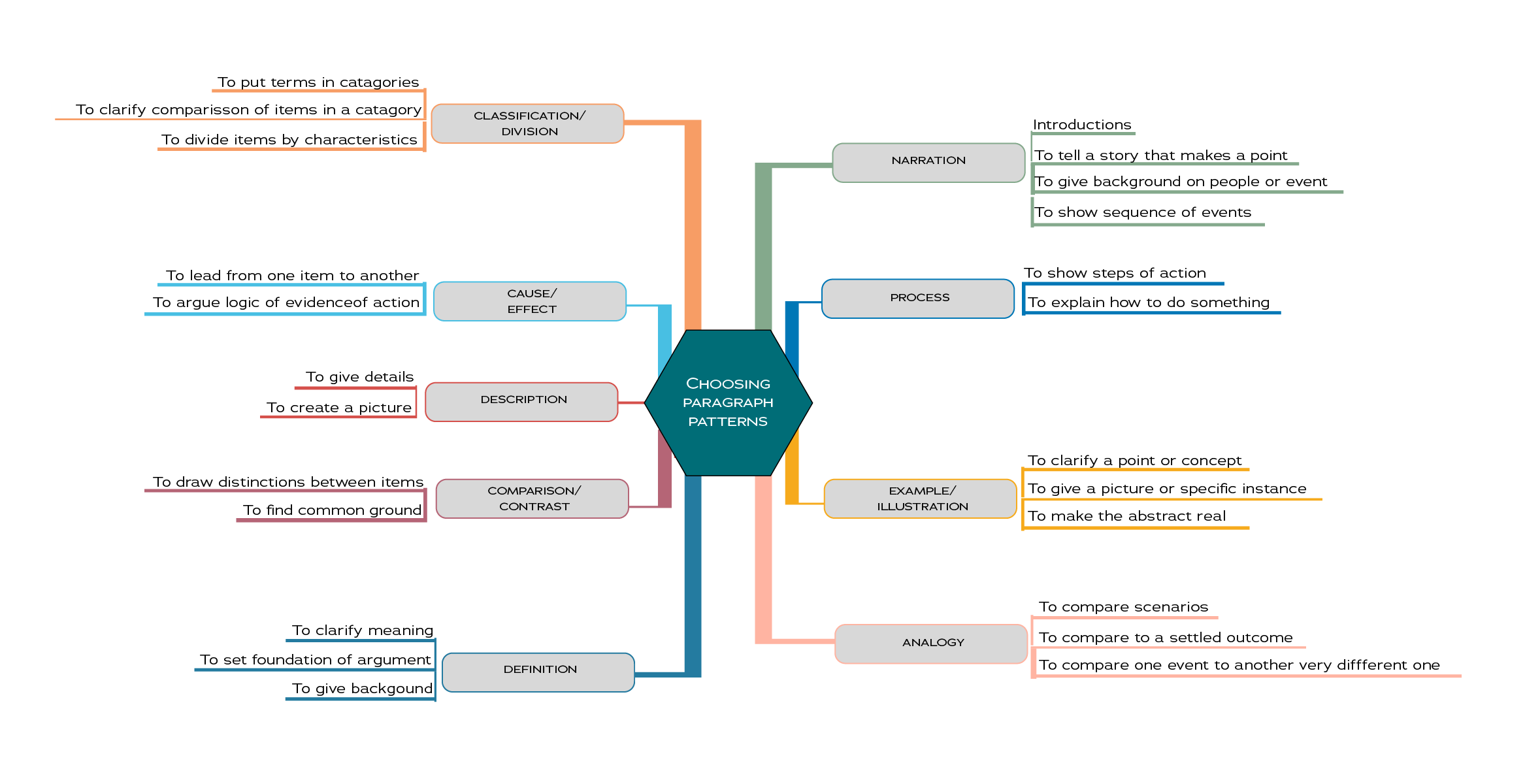Chapter 14: Rhetorical Modes
Rhetorical Modes
We’ve been focusing on broad categories of reading materials so far: literature, journalism, textbooks, and academic writing. Since most of the reading and writing you’ll do throughout your college career falls into the “academic writing” category, this is a good time to slow down and examine the building blocks of academic writing more closely.
Rhetoric is the study of writing, and the basic types of academic writing are referred to as rhetorical modes.

Choosing Paragraph Patterns
As you can see in the chart above, different styles of non-fiction writing serve different purposes. It’s quite possible that a single text—or even a single paragraph—will contain multiple rhetorical modes, each used to serve a distinct purpose in support of the article’s thesis.
Consider nine of the most common types of rhetorical modes. What might lead an author to select one type of writing over another? How might each be used differently to serve the purpose of a text?
Narration
The purpose of narration is to tell a story or relate an event. Narration is an especially useful tool for sequencing or putting details and information into some kind of logical order, usually chronological.
Literature uses narration heavily, but it also can be useful in non-fiction, academic writing by creating a strong impact on the audience.
Description
The purpose of description is to recreate, invent, or visually present a person, place, event, or action so that the reader can picture that which is being described. It is heavily based on sensory details: what we experience through our five senses.
Example
It’s common to see examples used in all kinds of situations—an idea can be considered too general or abstract until we see it in action. An exemplification essay extends this idea even further: it carries one or more examples into great detail, in order to show the details of a complex problem in a way that’s easy for readers to understand.
Definition
A definition essay takes the concept of “definition” more broadly, moving beyond a dictionary definition to deeply examine a word or concept as we actually use and understand it.
Process Analysis
Analyzing a process can also be thought of as “how-to” instruction. Technical writing includes process analysis (step-by-step instructions or explanation of a process), for instance. Academic writing can incorporate process analysis to show how an existing problem came to be, or how it might be solved, by following a clear series of steps.
Division/Classification
Classification takes one large concept and divides it into individual pieces. A nice result from this type of writing is that it helps the reader to understand a complex topic by focusing on its smaller parts. This is particularly useful when an author has a unique way of dividing up the concepts, to provide new insight into the ways it might be viewed.
Comparison/Contrast
Comparison focuses on similarities between items or concepts, and contrast focuses on their differences. We innately make comparisons all the time, and they appear in many kinds of writings. The goal of comparison and contrast in academic essays is generally to show that one item is superior to another, based on a set of evaluations included as part of the writing.
Cause/Effect
If narration offers a sequence of events, cause/effect essays offer an explanation about why that sequence matters. Cause/effect writing is particularly powerful when the author can provide a cause/effect relationship that the reader wasn’t expecting, and as a result see the situation in a new light.
Problem/Solution
This type of academic writing has two equally important tasks: clearly identifying a problem and then providing a logical, practical solution for that problem. Establishing that a particular situation IS a problem can sometimes be a challenge–many readers might assume that a given situation is “just the way it is,” for instance.
Adapted from “Rhetorical Modes” by Lumen Learning, used according to CC BY 4.0
Image adapted from “Choosing Paragraph Patterns.” Authored by: GrinnPidgeon. Located at: https://flic.kr/p/a9oiLS. License: CC BY-SA: Attribution-ShareAlike

